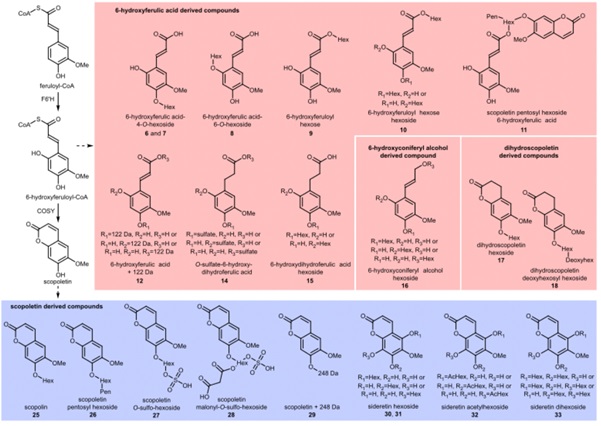[Wolfgang Schmidt] COSY catalyses trans–cis isomerization and lactonization in the biosynthesis of coumarins
POST: Lee Tzu WeiCoumarins are ubiquitously found in the plant kingdom and play important roles in plant defense and iron mobilization. Huei Hsuan Tsai, a TIGP student from Wolfgang Schmidt’s group who successfully defended her thesis last month, made significant contributions to a study that disproved the generally accepted model that the trans-cis isomerization and lactonization of o-hydroxycinnamoyl-CoAs to coumarins occur solely spontaneously, and showed that the biosynthesis of coumarins in roots is mediated enzymatically, which is particularly important under conditions of low iron availability.
In collaboration with Wout Boerjan’s group at VIB in Ghent, the IPMB researchers found that mutants defective in COUMARIN SYNTHASE (COSY), a newly identified enzyme in the phenylpropanoid pathway, have reduced iron content and show growth defects under conditions of low iron availability (Nature Plants). Recombinant COSY is able to produce umbelliferone, esculetin, and scopoletin from their respective o-hydroxycinnamoyl-CoA thioesters via two reaction steps: a trans-cis isomerization followed by a lactonization. This conversion happens partially spontaneously and is catalyzed by light, which explains why the need for an enzyme for this conversion has been overlooked. Because of its importance in iron uptake and plant defense, the discovery of COSY will potentially facilitate the development of crops with increased iron uptake and pest resistance, for instance via biotechnological engineering or marker-assisted breeding. Consistent with a conserved role in coumarin biosynthesis, orthologues of COSY are present in a wide range of plant species.
Nature Plants :https://doi.org/10.1038/s41477-019-0510-0
